Maybe I should have included a disclaimer there. I do not think it's unreasonable nor am I poking fun at anyone, I'd just like to debunk that.
As me and Lightning have discussed on Carnivora, the
Concavenator Shaochilong would have been agile enough to avoid the Sivatherium's attacks, and each bite would be devastating.
Moreover, modern predators are often able to kill herbivores 3-6 times bigger than them, and most of the weaponry of today's predators pales in comparison to that of Concavenator. Also, based off of Carnivora's threads and their replies, I have a feeling that Sivatherium (or giraffids) may not have been as formidable as other herbivores for their size, so a less formidable herbivore vs a more formidable predator has me favoring the predator, especially considering the feats of modern predators.
By the way, who do you favor, Infinity Blade? You seem to be helping out what Gaurus said, yet I have a feeling that's not the case.
Edit: Here are Gaurus' 2 replies to the thread:
S. giganteum may have been two and half times heavier than the theropod (1,250 kg vs 500 kg), and if it was anything like modern giraffe, it would have had a flexible, powerful neck that could deliver heavy yet precise blows during a fight. S. giganteum wielded more prominent ossicones than the modern giraffe, and given their sharp tips as well, I reckon the giraffid would have been able to gore an opponent with its headgear.
If the theropod commits to an attack, I am not convinced that it could avoid retaliation from the giraffid. There is a massive size disparity between the animals here, and it's heavily in favour of the giraffid. S. giganteum has also got at least 2 inches of hide covering it, and greater bulk. Giraffids are appropriately armed, as explained by the following excerpt.
Quote:
We know of eight anecdotal accounts of male giraffes injuring or killing their opponents during combat. In a fight between semicaptive giraffe, one animal was thrown sideways several feet by blows from the other. Dagg and Foster reported a male knocked unconscious by a blow from an opponent; another male was killed when the other punched a hole in its opponent's neck just below the ear, splintering the top vertebrae, which penetrated the spinal column. Resnik photographed a male with a broken and twisted jaw following a blow from an opponent, and Coe recorded a death during "necking" of a captive male giraffe, mistakenly allowed into the enclosure of a similar-sized male.
In three fights recorded in our study between large (old) bulls in northwestern Namibia, head clubbing resulted in the opponent being knocked to the ground on each occasion. The force was sufficient to break an opponent's leg in one encounter, and, in the most violent encounter, a male clubbed his rival to the ground, and the rival was prevented from standing by the opponent stamping its foreleg until death occurred. This is the only known record of a giraffe using its hooves in intraspecific aggression.
Author: Winning by a Neck: Sexual Selection in the Evolution of Giraffe
I disagree with the current consensus.
I think the giraffid would be in a viable position to knock down the theropod with a good whack, and subsequently stomp it to death.
and
Something else to consider is that giraffids have particularly thick skin on certain parts of their frame, which is often thought to act as a defense mechanism. The areas of a giraffe likely to be injured during intraspecific fighting, as well as body parts where predators frequently choose to attack, are endowed with thick skin to resist puncture.
Quote:
Potential Dermal Armor
Although regional variations in the thickness of mammalian skin are a feature of many mammals, it has been posited that in certain larger mammals the thickness of the skin may act as a protective shield, with the location of increased thicknesses of the dermis related to regions likely to be injured during intraspecific combat. In this study of the giraffe, we found a large region of thick skin on the upper half of the trunk/rump and a substantially thickened deep dermal region on the anterior and lateral surfaces of the neck. Intraspecific combat in male giraffe is evidenced mostly as “necking” behavior. Given this method of intraspecific aggression, it is possible that the thicker skin of the neck may provide a protective function; however, this does not explain the thickness of the skin on the upper trunk/rump. As far as the authors are aware, there are no reports of giraffe, for example, biting one another on the trunk/rump during intraspecific combat.
Although it is well known that lion will kill giraffe, the authors cannot find the exact attack method described in the scientific literature; however, natural history documentaries often feature lions leaping onto the giraffe's back to pull it to the ground. Thus, the thickened skin in this region may provide protection against the claws and teeth of potential predators. Despite this, it is most likely that the thickness of the giraffe skin on both the anterior neck and rump is related to protection from the thorns of the acacia trees on which it feeds. These regions of increased skin thickness would allow the giraffe to move around in dense acacia vegetation and not suffer from cuts to the skin that would cause major openings and extensive bleeding. It is of interest to note here that these regions of thickened skin that may correspond to dermal armor are indeed far thicker than what would be predicted allometrically, thus supporting the possibility of specific increases in skin thickness as a potential defense mechanism.
Study: Variations in the Thickness and Composition of the Skin of the Giraffe
This thickness of hide, as well as much larger body size, brings doubt to the aforementioned notions that the theropod could fatally injure the ruminant before being shaken to the ground and trampled to death.
However, here is Lightning's post in the thread, and I find it to more or less debunk what Gaurus said:
The shaochilong is more agile and shorter than the sivatherium by a good amount. Hence, I think it will be really difficult for the sivatherium to neck-whack the shaochilong
I got this image of the shaochilong from prehistoric wildlife (it's not a very good source but it's better than nothing and I'm not sure where to look for scientific sources):
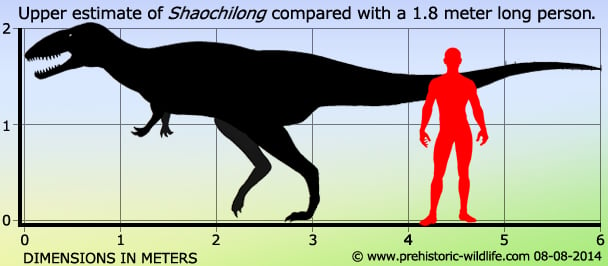
And this is an image of the old, 400kg to 500kg estimate of sivatherium:
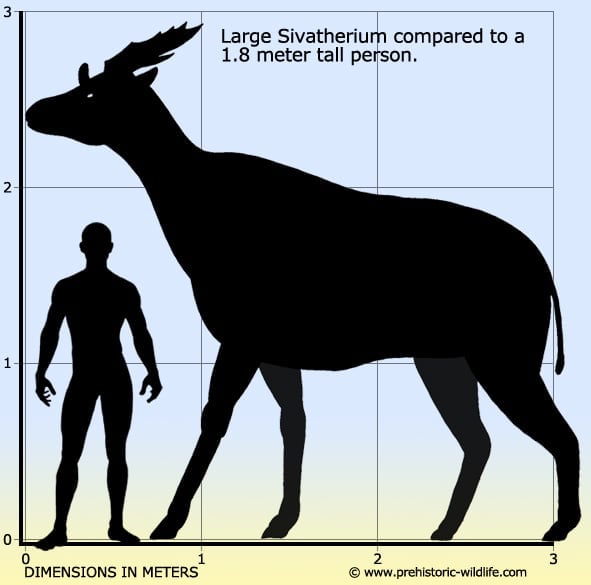
*This animal looks about 1.25 tons, not 500 kg
Thus, the 400/500kg estimate of sivatherium is already taller than the shaochilong. The new 1250kg estimate would show a much taller giraffe. I find it hard to imagine it neck-whacking the shorter, more agile theropod.
It would be even more difficult for the sivatherium to gore the theropod with its horns and the sivatherium's horns look less impressive than bovine horns:

The sivatherium may have a thick hide but this theropod has far deadlier weaponry than the much smaller lions the sivatherium would have had to deal with. The shaochilong's skull would have likely been around 70cm, as long as a hippo skull, and, being a carcharodontosaurid, its jaws are filled with serrated teeth which slice through meat easily, would cause massive wounds and kill the prey through huge amounts of blood loss.
Sharks also have serrated teeth (and shaochiling means "shark toothed dragon" lol) and this is what a shark bite did to a seal:
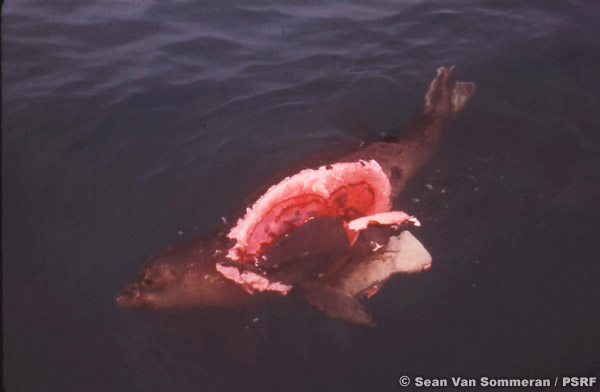
A bite from a shaochilong would do similar damage.
I know the sivatherium's thick hide is much harder to penetrate than seal blubber but I still doubt it'd be able to stand up to the theropod's huge jaws.
I think the theropod can keep doing bite-and-run attacks until the giraffe collapses from its wounds. And I think the theropod would be too agile for the sivatherium to attack it.
A close modern analogy to this match up I think would be coyotes killing mule deer like this:
youtu.be/MocKEor1BM8youtu.be/g9E0ialHlH0It's not a perfect analogy since sivatherium is proportionally more durable than deer and the shaochilong has proportionally larger jaws and a far deadlier bite than a coytote but it's the closest I can think of.
I realise that this is a lone shaochilong vs sivatherium match whereas there are 2 and 3 coyotes in those videos I posted but a mule deer is 5X heavier than a coyote whilst a sivatherium is just 2.5X heavier than a shaochilong.
And here is the thread link:
carnivora.net/showthread.php?tid=4154&pid=28634&highlight=aforementioned+notions#pid28634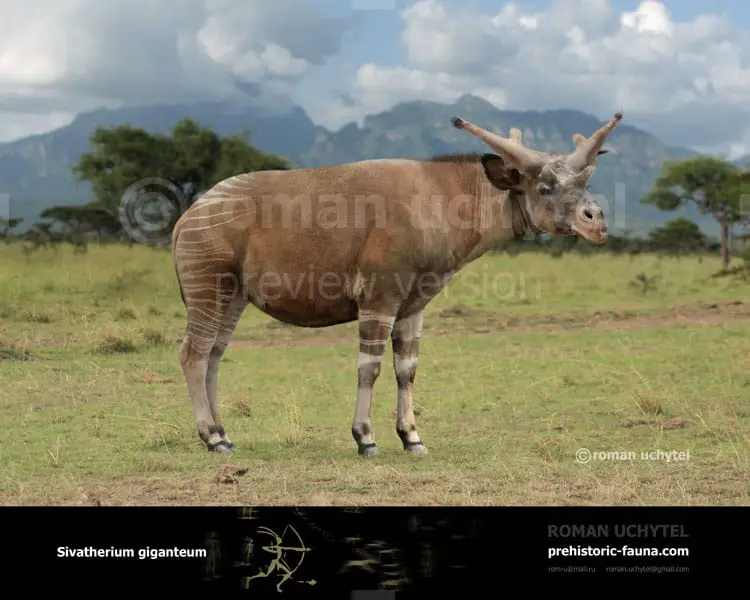
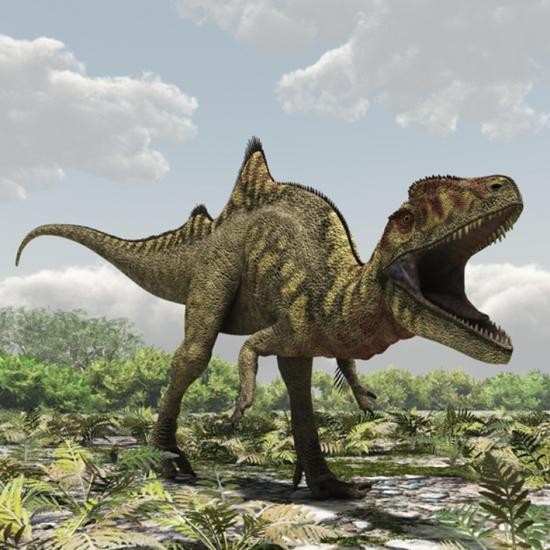












 *This animal looks about 1.25 tons, not 500 kg
*This animal looks about 1.25 tons, not 500 kg



